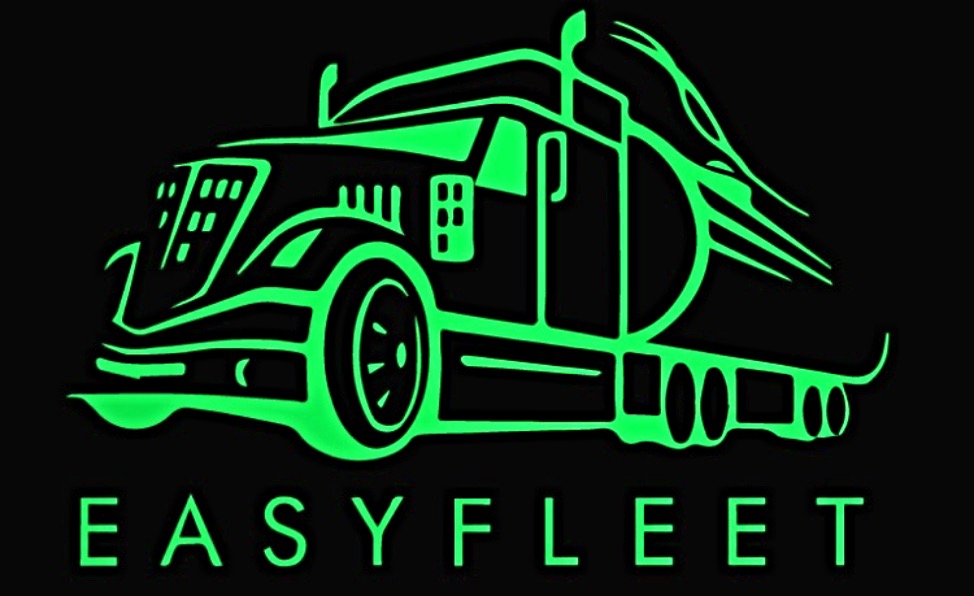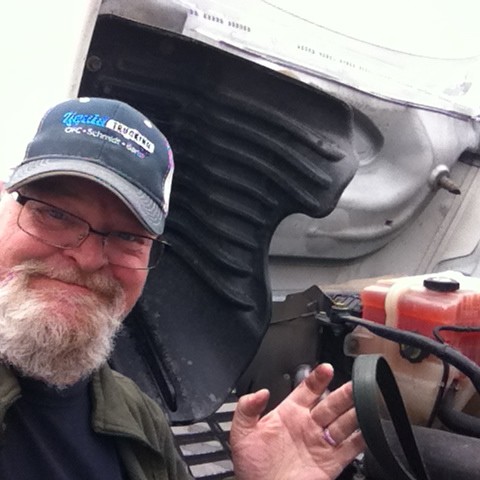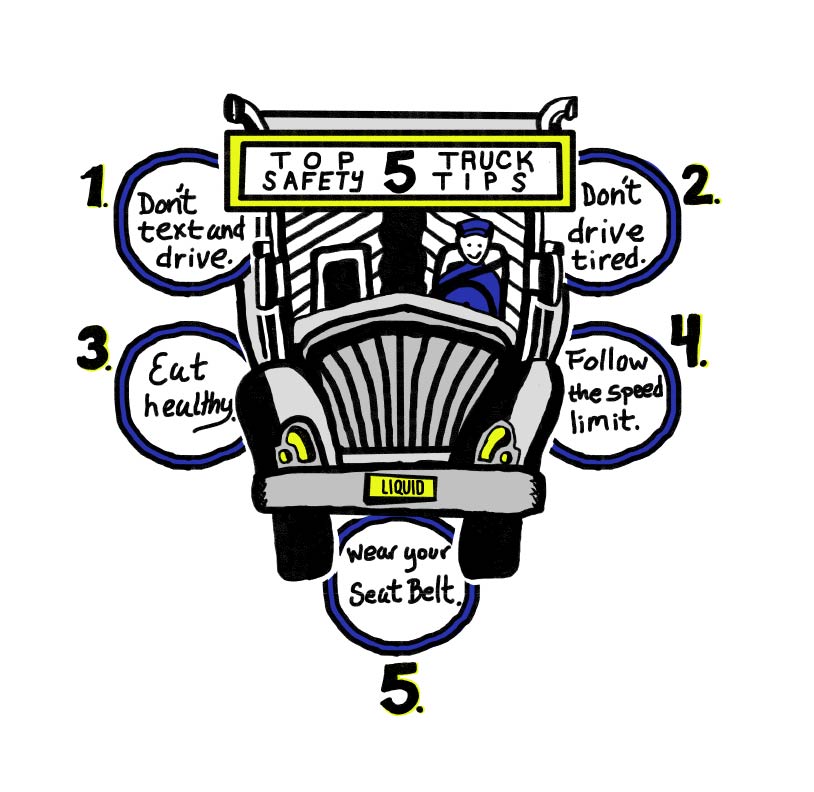Not known Details About Liquid Co

Prior to packing, dumping, or driving a vessel, evaluate the automobile. This makes sure that the lorry is safe to bring the liquid or gas and is risk-free to drive. A CLP holder with a tank endorsement (N) is banned from operating a storage tank vehicle unless it is vacant - petroleum transporte. Furthermore, if the vessel formerly had hazardous products, it must be purged (FMCSR § 383.25).


Storage tank lorries come in numerous kinds as well as sizes. You require to examine the automobile's driver guidebook to make certain you understand just how to check your container vehicle. On all container lorries, the most vital item to inspect for is leakages. Inspect under as well as around the automobile for signs of any type of leaking.
To do so is a criminal activity. You will certainly be cited and protected against from driving further. You may likewise be liable for the clean-up of any type of spill. Generally, examine the following: Inspect the tank's body or covering for damages or leaks. Check the intake, discharge, and cut-off shutoffs. See to it the shutoffs are in the proper placement before filling, dumping, or moving the automobile.

Examine manhole covers and also vents. Make certain the covers have gaskets as well as they close properly. Keep the vents clear so they function appropriately. If your lorry has any of the following equipment, ensure it works: Vapor recuperation kits. Grounding and bonding wires. Emergency shutoff systems. Integrated in fire extinguisher.
Check the emergency devices required for your car. Figure out what equipment you are required to bring and see to it you have it (as well as it works). Carrying liquids in tanks needs special skills due to the high center of gravity and also liquid motion. See Number 8.1. Number 8.1 High center of gravity indicates that much of the tons's weight is brought high up off the road.
9 Easy Facts About Top Trucking Companies Explained
Fluid vessels are especially easy to surrender (tanker companies). Examinations have actually revealed that vessels can transform over at the rate limits uploaded for contours. Take highway contours as well as on ramp/off ramp contours well below the published rates. Liquid surge results from movement of the liquid in partly filled containers. This motion can have bad results on handling.
When the wave hits the end of the container, it has a tendency to push the vehicle in the direction the wave is relocating. If the truck gets on a slippery surface area, such as ice, the wave can push a quit vehicle out right into a crossway. The driver of a fluid vessel should be really accustomed to managing the automobile.
When filling as well as discharging smaller sized containers, the vehicle driver must focus on weight circulation. Do not place way too much weight on the front or rear of the vehicle. Baffled liquid containers have bulkheads in them with openings that let the liquid flow with. The baffles aid to manage the forward as well as backward fluid rise.

Unbaffled fluid tankers (sometimes called "smooth bore" containers) have absolutely nothing inside to decrease the flow of the fluid. Therefore, forward-and-back surge is extremely solid. Unbaffled tanks are typically those that transfer food products (milk, for instance). (Sanitation regulations forbid the use of baffles due to the trouble in cleaning the inside of the tank.) Be incredibly cautious (sluggish as well as mindful) in driving smooth birthed tanks, particularly when starting and also quiting.
Fluids increase as they warm up and also you need to leave area for the increasing liquid. This is called "blackout." Because different liquids broaden by various quantities, they require various quantities of outage. You must know the outage requirement when transporting fluids wholesale. A full tank of thick fluid (such as some acids) may surpass lawful weight limits.
Some Known Facts About Liquid Co.
The amount of fluid to load right into a storage tank depends upon: The quantity the liquid will certainly increase en route. The weight of the liquid. Legal weight restrictions. The temperature level of the tons. If you are driving a tank vehicle transferring more than 500 gallons of combustible liquid at a rate quicker than the appropriate rate limitation or in neglect for the security of persons or property, along with any kind of other relevant fine, for a very first offense you undergo a penalty of not much less than $500 and also for a second or subsequent infraction within 2 years of a previous infraction, you go through a fine of not much less than $2,000 as well as a suspension of approximately 6 months of a dangerous materials or freight tank recommendation, or both (CVC § 22406.5).
In order to drive container vehicles securely, you have to keep in mind to adhere to all the secure driving regulations. A few of these rules are: Due to the fact that of the high center of mass and the surge of the liquid, you should begin, reduce down, and stop extremely efficiently. Additionally, make smooth turns as well as lane changes.
Do not launch the brakes as well quickly when coming to a stop. Brake much ahead of a stop and also raise your following distance. If you should make a fast quit to prevent a mishap, use controlled or stab stopping. If you do not keep in mind exactly how to stop using these approaches, review Area 2 .
Decrease before curves, and afterwards speed up a little with the curve. The published speed for a curve might be too quickly for a tank automobile. Bear in mind how much area you need to stop your car. Bear in mind that damp roadways double the normal stopping distance. Vacant container lorries might take longer to quit than complete ones.
drive united trucking company reviewsfreight brokerstarting a trucking business in illinois
If you do, your vehicle may skid - liquid co. On storage tank trailers, if your drive or trailer wheels begin to skid, your automobile might jackknife. When any car starts to skid, you should act to bring back grip to the wheels. Test Your Understanding Exactly how are bulkheads various than baffles? Should a storage tank car take contours, on ramps, or off ramps at the published rate limits? Exactly how are smooth birthed vessels different to drive than those with baffles? What 3 points figure out just how much liquid you can fill? What is failure? Exactly how can you aid manage surge? What 2 reasons make unique treatment required when driving storage tank automobiles? These concerns may get on the test.